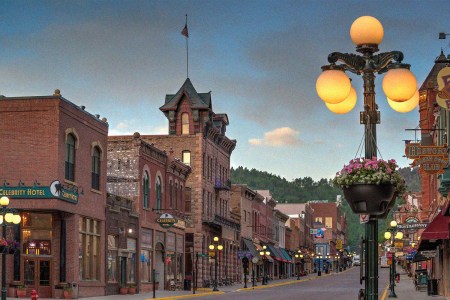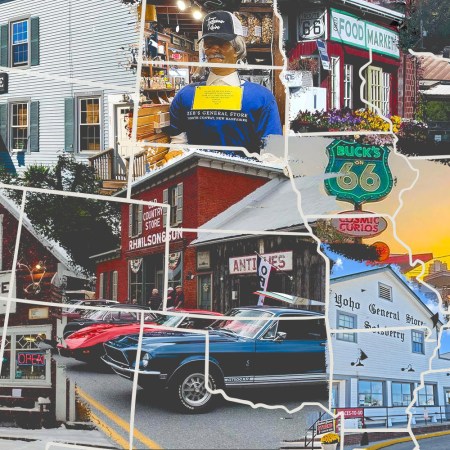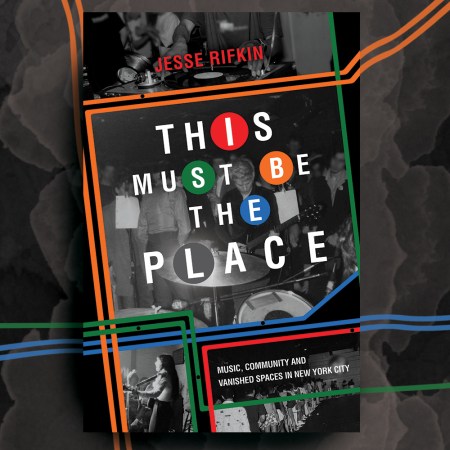Dive bars and music venues are a dime a dozen, but a few transcend to become something far more than a watering hole. A few, like The Pomp Room in Sioux Falls, South Dakota, become cultural cornerstones where off-duty cops bump elbows with teenagers, artists and Steven Tyler. The story of The Pomp Room, equally famed and infamous for its raucous music sets and intimidating bouncers, is one of legend — the kind of urban institution that stood as a beacon for culture-curious small-towners, cementing itself as part of the city’s DNA, and leaving a legacy that endures for decades after its closure.
Originally opened in 1958 as The Pump Room, before a likeminded fine dining restaurant in Chicago threatened a lawsuit, the bar quickly cemented itself as a haven for cheap drinks and live music, under the ownership of Chris and Mae Miller. Faced with a cease-and-desist from The Pump Room at Chicago’s Ambassador East Hotel, they simply swapped vowels.

The bar quickly established a reputation as the quintessential live music hub in South Dakota’s largest city — a reliable bastion for head-banging rock, mosh pits and an eclectic clientele that brought together folks from all walks of life. It was the kind of institution that engendered fierce loyalty from its customers, like Sgt. Dale Dean, an off-shift regular who bought the bar from the Millers and relocated it to prime downtown turf in the ‘60s. Continuing to pass down the rungs of impassioned regulars, a rancher named Duane Ertz took it over in 1971, keeping it kicking — along with his sons, Jon and Ward — for the rest of the century amidst periodic expansions, an increased focus on rock music and a come-one, come-all atmosphere that opened the door for new generations to experience the pomp of it all.
Until its closing after New Year’s Eve 1998, The Pomp Room played host to indie bands like The Medicine Show, Calico and The Association, before building a 44-foot x 20-foot stage that could accommodate larger acts, like Cheap Trick, Korn and Aerosmith, the latter of which crashed a set from local band Crash Alley as part of an MTV series, Rockumentary.
The saga of The Pomp Room may sound like familiar fodder for American bars and clubs of a certain caliber — the kind that ascends into the local lexicon and leaves an indelible mark. But for South Dakotans, it was so much more. Which is what inspired a team of wistful locals to make a documentary about it, detailing the rise and fall in The Pomp Room: A Rock N Roll Bar Story.
“It always had music, but it slowly became this place that people knew for good music,” explains Austin Kaus, co-director, -writer and -producer of the documentary, along with Jesse Yost. “Musicians knew that they treat us right and take care of us, and people who show up like to rock. This reputation just grew.”
In the ‘60s and ‘70s, that reputation was as sordid as it was spirited, with many in Sioux Falls criticizing its debauchery as the “scourge of downtown,” as Kaus recalls. “I knew nothing of it when my friend called me in the mid-’90s and wanted to see a band there. I was scared to drive in the ‘big city,’ and when we got to this place, I thought, ‘Where in the hell are we?’” As a self-described music obsessive, his intrigue outweighed his fear, and Kaus quickly understood the allure of The Pomp Room, attending as many all-ages shows as he could, forging his dad’s signature on fake dentist notes to get out of school.
This Wild West Town in the Black Hills Is the Ultimate Summertime Road Trip
Deadwood is a blast from the gold rush past in western South DakotaFor Kaus, its imposing presence, decried by some, was part of the charm. “The first thing you saw were thick steel doors that looked like they’d be on an illegal bank vault or something,” he says. “When the doors opened, the first person you encountered was this scowling bouncer. I don’t know if he hated kids or what, but he was intimidating, and that was your introduction to The Pomp Room.” Unabashedly dark and dingy, with unexplained oddities like an L-shaped pool table, the irreverent bar endeared itself to many. “It was jam-packed with kids my age, and nobody looked exactly the same, but everyone was there for the same thing,” Kaus recalls. “It looked like this terrifying place, but there wasn’t a bad vibe to be found.”
The good vibes stuck around, and after years of live music during this formative phase, Kaus maintained that fondness long after The Pomp Room’s closure. Over a plate of wings with Yost, the two discussed the bar and its influence. “That place never left me, it was always special to me,” says Kaus. “By the end of the wings, we were like, ‘Let’s do a documentary.’” Yost had previous experience in video production, and they brought on local talent, like Matt Pinfield as narrator, Bryan Middleton as editor and Dominic Wieneke as director of photography. After creating a Facebook page for the in-the-works documentary, they quickly amassed thousands of likes in less than a year, proving what Kaus and Yost already knew about the bar’s enduring impact.

During the filming process, that impact revealed itself to be deeper than anyone realized. “If I was a smarter man then, I would have written down things that people told me when interviews were done,” Kaus muses. “That’s when they’d tell the stories they didn’t want to tell on camera. I didn’t realize a lot about this place, I just knew I loved it. Learning how rich this musical history was, and how many bands played there, I had no idea the dedication that place had in music.”
According to Kaus, that legacy is thanks to the Ertz family and their undying love for music. “There’s a big difference between someone who owns a music club and only looks at the bottom line, and people who are trying to make a profit but also fostering that musical connectivity,” he distinguishes. “There were other venues, but none like The Pomp Room.” After its closure, at 2 a.m. on January 1, 1999, he says the live music scene in Sioux Falls suffered for a while. A lack of reliable venues meant inconsistent shows in sporadic locales, but the city’s music scene has since revived, thanks to the opening of places like Total Drag, a record store with a small music venue.
Some 25 years after its closure, The Pomp Room’s influence is still felt, and if early feedback and fandom is any indication, that legacy — and what bars like these mean to communities — is far wider than even Kaus and Yose could have imagined. With upwards of 100,000 views on YouTube, the documentary has widespread resonance that’s garnered praise from viewers as far away as Australia and Scotland. “It’s more of a universal story than I expected,” Kaus says. “This is a story about family and legacy and the power of music. I’m not along in believing the power of music, but I didn’t realize it would be that big.”
The documentary is currently available to stream on YouTube, and Kaus is working on an Etsy page for merchandise and DVDs. In the meantime, hard copies are sold at select South Dakota stores, like Black Hills Vinyl in Rapid City, or online orders can be placed by messaging the film’s Facebook page.
Looking back, over the reign of The Pomp Room and the subsequent documentary it inspired, Kaus is proud to be a part of such a legacy. “It was a ton of work, but the love kept pumping,” he says. “We didn’t know what we were doing aside from wanting to tell the story, because we thought it was important, and it became about this family that was multi-generation. Then you had people from my generation who were like, ‘The Pomp Room is where I fell in love with music.’ It was a beautiful story to tell.”
This article appeared in an InsideHook newsletter. Sign up for free to get more on travel, wellness, style, drinking, and culture.

























